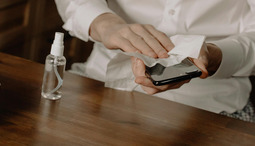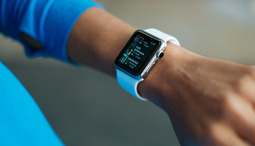- On
- 13 Jun 2023
- Reading time
- 4 minutes
Heating pads, with their comforting warmth, have been a staple in households for dealing with various aches and pains. From soothing sore muscles, easing menstrual cramps to providing relief from arthritis pain, these portable devices have a wide range of uses. But, what's the science behind heating pads that make them so effective for pain relief? Let's delve deeper into the mechanics of heat therapy and the role it plays in our wellbeing.
Heat Therapy: A Time-Honored Remedy
Heat therapy, also known as thermotherapy, is a pain relief method that involves applying heat to the affected areas of the body. This method has been utilized by humans for centuries as it exploits a very basic principle: warm things tend to be relaxing and comforting.
The Role of Heat in Pain Management
Heat therapy works by increasing blood flow to the targeted area, delivering more oxygen and nutrients that facilitate healing. This occurs as heat causes the blood vessels to expand, promoting better circulation. Moreover, heat can promote muscle relaxation and flexibility, further contributing to pain reduction.
A quick look into various sunbeam heating pad reviews reveals numerous first-hand accounts of individuals finding relief from pain through heat therapy. These user reviews offer valuable insight into the real-world efficacy of heating pads, reinforcing the scientific findings regarding heat's beneficial impact on pain management.
Heat Therapy Varieties
Different modes of applying heat serve as effective methods of heat therapy. Each has its own characteristics, advantages, and specific uses.
Heating Pads and Other Tools
The most common of these include heating pads, hot baths or showers, hot packs, heat wraps, and even heated clothing. Each method has its own benefits and best use scenarios. The method chosen often depends on the nature and location of the pain, individual preferences, and available resources.
Heating Pad Comparisons
Electric heating pads, for example, allow precise temperature control, while microwavable ones offer portability and ease of use. However, all forms of heat therapy should be used with care, especially around sensitive items, including food and drinks, to prevent accidental burns or damages. Each type has its own set of pros and cons, so personal needs and preferences should guide the choice of a heating pad.
Diet, Lifestyle, and Pain Perception
While heat therapy provides significant pain relief, it isn't the only factor to consider. A comprehensive approach to pain management should also take into account diet and lifestyle factors, as they can significantly impact one's overall health and wellbeing, as well as the perception and management of pain.
The Impact of Diet
Diet plays a crucial role in pain management. A balanced diet rich in anti-inflammatory foods can help control inflammation, a common source of pain. These foods include fatty fish, berries, avocados, broccoli, and green tea. Furthermore, maintaining a balanced diet can prevent weight gain, which can put additional stress on joints, leading to increased pain. Moreover, certain food items and drinks, such as caffeine and alcohol, can have a dehydrating effect, which may exacerbate certain kinds of pain, emphasizing the need for adequate hydration.
The Role of Lifestyle Choices
Regular exercise, even simple low-impact activities like walking or swimming, can improve circulation and flexibility, thereby aiding in pain management. Furthermore, exercise can help maintain a healthy weight, which, as mentioned above, can help reduce joint stress. Apart from exercise, stress management techniques such as meditation, yoga, and deep breathing exercises can also help reduce body tension and decrease pain. Sleep, too, is an often overlooked but critical factor. Lack of proper sleep can intensify the perception of pain and hinder the body's natural healing processes.
Heating Pads and Health Considerations
While heating pads can provide substantial pain relief, it's essential to be mindful of certain considerations to ensure their safe and effective use.
Do's and Don'ts with Heating Pads
- Do not use a heating pad for more than 20 minutes at a time.
- Do not use a heating pad on broken or irritated skin.
- Do not use a heating pad while sleeping or on someone who is sleeping.
- Do adjust the temperature setting to prevent burns.
- Do consider using a cloth barrier between the heating pad and skin for added protection.
Special Health Considerations
Consult a healthcare professional before using a heating pad if you have certain medical conditions or are pregnant.
Remember, heating pads can provide temporary relief, but they are not a cure for chronic pain or conditions. Seek medical advice if your pain persists or worsens.
In light of these facts
Heating pads, with their ability to provide comforting warmth and alleviate various aches, have science-backed legitimacy. From increasing blood flow and promoting muscle relaxation to potentially interfering with pain signals, the benefits of heat therapy are wide-ranging. Remember, while heating pads are an effective tool for pain relief, they should be used as part of a comprehensive pain management strategy that also considers diet, lifestyle, and professional medical advice.








